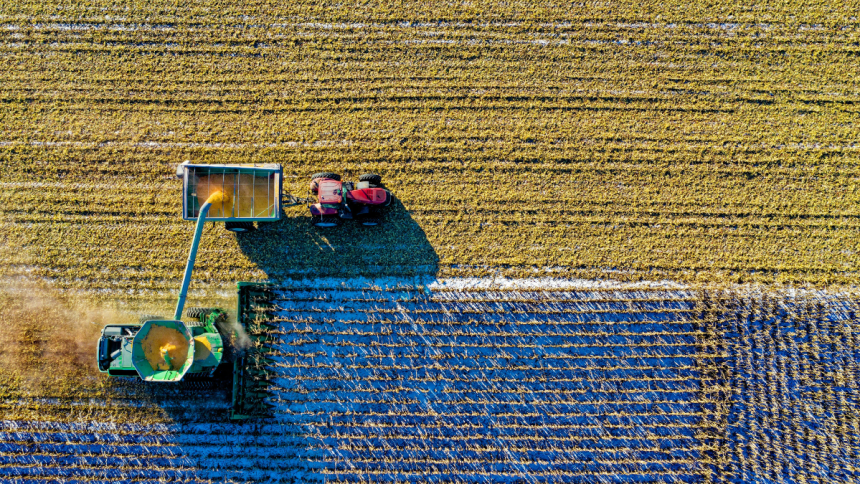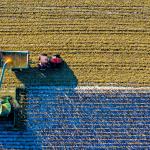Agriculture is one of the oldest industries in the world, but in recent years, it’s seen some of the most exciting advancements in technology. As the global population grows and the demand for efficient, sustainable food and plant production rises, farmers and processors are turning to modern tools to help meet these challenges. What was once a field managed largely by physical labor and intuition is now guided by data, automation, and precision machinery.
One of the biggest shifts in the industry is the growing emphasis on efficiency when it comes to post-harvest processes. For growers and processors, time is money, and the need to maintain product quality while increasing output has led to the development of smarter, faster tools. From seed to shelf, nearly every step of the agricultural process is being transformed by technology. Nowhere is this more obvious than in plant processing, where automation is taking center stage.
Modern Tools Transforming Plant Processing
After crops are harvested, the next step is processing, which can be one of the most time-consuming and labor-intensive parts of the operation. For years, trimming and sorting plants required significant manual effort, which often limited how much a facility could produce in a given timeframe. As demand for precision and efficiency continues to grow, automated trimming tools have become an essential upgrade for modern plant processors.
One area where innovation is particularly clear is in large-scale trimming solutions. Today’s commercial dry trimmers are engineered for high-capacity, continuous throughput, making them ideal for processors who need consistent, scalable trimming performance without compromising product quality. These machines can process large volumes quickly, which helps businesses meet market demands without relying solely on manual labor. More importantly, the precision of automated trimmers helps preserve the appearance and integrity of the final product, which is an important detail for industries that rely on uniformity and presentation.
By integrating automation into the trimming process, producers can reduce waste, lower labor costs, and increase overall throughput. These types of tools are becoming standard in modern processing environments because they offer the kind of scale and consistency that manual methods often struggle to deliver.
How Sensors and Software Are Redefining Field Management
While automation plays a key role in processing, technology is also changing how farmers manage their crops in the field. The use of sensors and software is giving growers real-time insights into soil conditions, moisture levels, and plant health. With these tools, farmers no longer have to rely solely on guesswork or outdated methods. They can make data-backed decisions that improve crop yield and reduce resource waste.
For example, soil sensors can alert farmers when certain areas of a field need watering or fertilizing, allowing for more targeted care. Weather tracking tools can help farmers prepare for changing conditions, minimizing the risk of crop loss due to drought or heavy rain. These innovations make it possible to monitor and manage entire fields from a single dashboard, saving time and resources while improving outcomes.
Smart farming tools are especially useful for medium to large-scale operations that need to maximize efficiency without compromising quality. By combining real-time data with modern equipment, farmers can better manage the complex variables that influence each growing season.
Machines That Do the Heavy Lifting
Another major advancement in agriculture is the use of robotics and artificial intelligence in day-to-day operations. In the past, harvesting and field maintenance required dozens of workers and countless hours of labor. Today, robotic harvesters, autonomous weeders, and drones are taking on much of the physical burden.
Robotic arms and self-driving carts are being used to pick fruit, sort vegetables, and even detect plant diseases before they spread. These machines use advanced imaging and pattern recognition to identify when crops are ripe and ready to harvest, helping to reduce waste and improve timing.
In greenhouses and controlled growing environments, robots can perform repetitive tasks like pruning and moving plants, allowing human workers to focus on more strategic activities. This shift not only improves efficiency but also addresses labor shortages that many agricultural operations face each season.
By using automation where it makes the most sense, farms can become more productive without overworking their teams. The result is a more balanced, efficient operation that’s better equipped to handle today’s demands.
Tech That Supports Green Farming Goals
As environmental concerns grow, many agricultural businesses are turning to technology to support more sustainable practices. Precision farming tools are helping reduce the use of water, fertilizers, and pesticides by applying them only where needed. It not only saves money but also protects the environment by minimizing runoff and resource depletion.
Solar-powered irrigation systems, smart greenhouses, and biodegradable sensors are just a few examples of how sustainability is being integrated into modern farming. These tools allow growers to reduce their carbon footprint while maintaining high levels of productivity.
Sustainable tech solutions are especially important for farms that want to stay competitive while aligning with consumer demand for eco-friendly practices. As more customers prioritize environmentally responsible products, using clean and efficient methods can help build trust and loyalty.
Balancing Innovation with Practicality
While the benefits of agricultural technology are clear, adopting new tools doesn’t come without challenges. Many smaller farms struggle with the upfront costs of modern equipment, and there’s often a learning curve involved in using digital tools effectively. Training staff, maintaining machines, and integrating new systems into existing operations all require time and resources.
Another consideration is access. Some rural areas still lack reliable internet or electricity, which can limit the use of certain high-tech systems. For technology to truly transform agriculture, it needs to be scalable and accessible to farms of all sizes.
That said, even small steps toward modernization can make a big difference. Choosing the right tools for your specific needs and gradually implementing them can lead to better outcomes without overwhelming your resources. It’s not about replacing traditional methods entirely but rather enhancing them with technology that adds value.
Planting the Seeds of the Future
The future of agriculture is being shaped by innovation, but practical needs and real-world challenges are also guiding it. From commercial dry trimmers that streamline post-harvest processing to smart sensors that optimize growing conditions, technology is helping farmers and producers work more efficiently and sustainably than ever before.
As these tools continue to evolve, they offer new opportunities for businesses to grow, adapt, and stay competitive in a changing world. Whether you’re running a large-scale farm or a specialized plant processing facility, embracing the right technology can improve your operations, reduce costs, and support long-term success.
Innovation in agriculture isn’t just about staying current. It’s about preparing for a future where efficiency, quality, and sustainability go hand in hand. And with the right approach, that future is well within reach.
Lynn Martelli is an editor at Readability. She received her MFA in Creative Writing from Antioch University and has worked as an editor for over 10 years. Lynn has edited a wide variety of books, including fiction, non-fiction, memoirs, and more. In her free time, Lynn enjoys reading, writing, and spending time with her family and friends.















